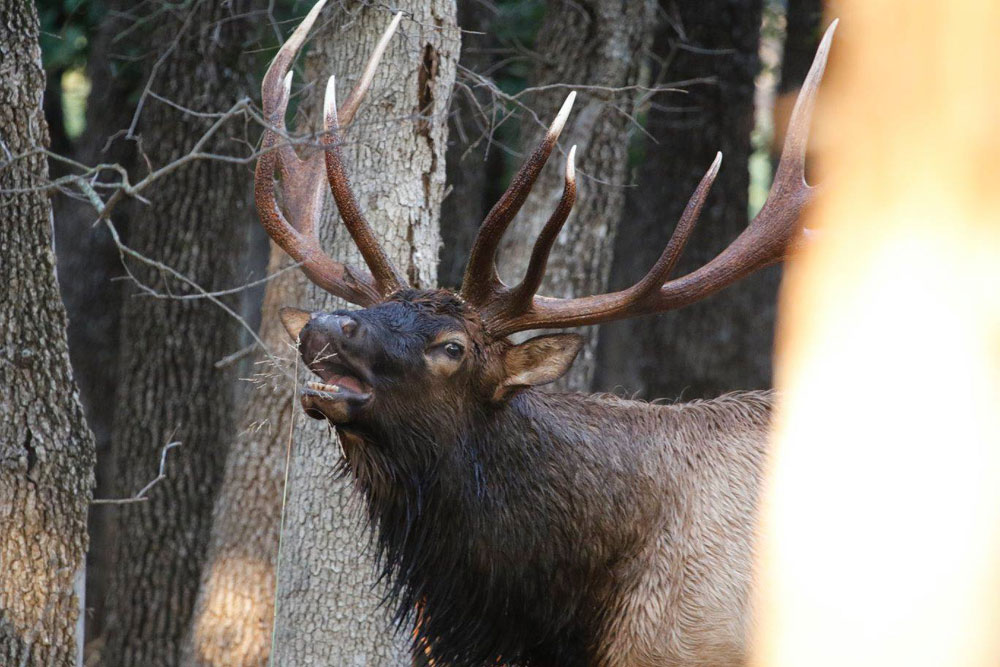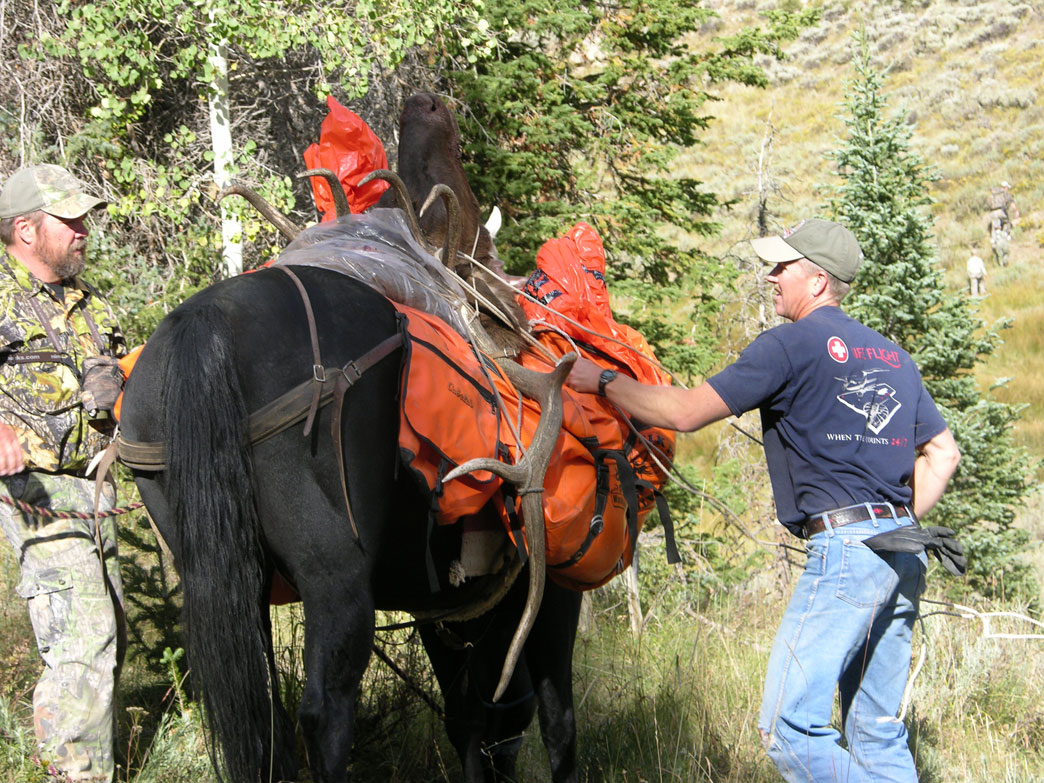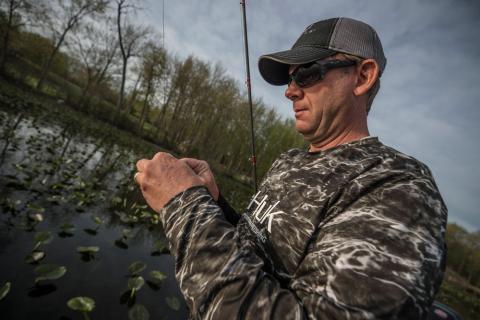provided by John Phillips
Mossy Oak ProStaffer Lynn Worwood, from Nephi, Utah, has been hunting elk for 43 years. The only guiding he does is for family and friends. Worwood is also a member of the Quaker Boy ProStaff.

The toughest bull I’ve ever hunted was my youngest son Kevin’s bull. We were hunting the same unit in Nephi, Utah, where I had taken my biggest bull, and this hunt happened a year or two later after mine. Kevin drew an archery tag, and he had four weekends to find and take his bull. So, we hunted the first three weekends and then stayed there the entire last week to hunt. During that last week, we hunted every single day from before dusk until after dawn. Three days before the end of the hunt, we walked about 2.5 miles, following some elk we’d spotted early that morning. We were almost at the point where we were going to give up the hunt because we never could get a bull to bugle back to our calling. The rut was just barely starting, and the bulls weren’t as fired-up as they would be a week later.
We cow-called a few times. Then I took the spike bugle call that my father had made in the 1940s from EMT conduit and whistled a couple of times. We finally heard a bull bugle down in a deep canyon. Since my oldest son, Mike, was hunting with my son Kevin and me, we decided that I’d stay on top of the canyon, and Mike and Kevin would go down in the canyon and try and take the elk. Mike and Kevin had to travel for about an hour to go down from the ridge into the deep canyon where we’d heard the elk bugle. I spike-called to the bull, and he bugled to me. Next Mike and Kevin cow-called, and he bugled to them. Then they heard a second bull bugle. When they were going to the first bull, the second bull bugled even closer to them. Mike quickly got some cow-n-heat spray and sprayed Kevin down with that elk lure. Then Kevin ran about 50 yards toward the bull. Just as Kevin was almost at a log where he planned to sit down and take a stand, the bull came out of the pines, headed straight toward Kevin.
Mike later said, “I wasn’t going to call to the bull because he was moving straight to Kevin. I saw the bull stop and watched Kevin raise his bow. Then he started trotting toward Kevin, and he bugled while he was trotting.”
Kevin explained, “Once the elk was at 15 yards, I decided I’d better go ahead and draw my bow. As close as he was to me, I felt certain he’d see or smell me and break and run. I planned to take the shot when he turned. But when the bull didn’t stop until he was 13 yards from me, and I was at full draw, I decided to release the arrow and shoot for his brisket.”
Mike said, “I cow-called to attempt to get the elk to stop at 15 yards, but he wouldn’t stop and kept going straight for Kevin.”
When the elk took the arrow, he turned and trotted about 30 yards uphill, stopped, reared-up and fell over dead. We had been hunting hard for almost a week, and we had bulls answering us almost every day. But those bull elk wouldn’t come out of those deep canyons where they were bedded-down. After I knew that Kevin had downed his elk, I was thinking to myself, “I’m dead tired, and I know they are too.” However, I went down and helped my sons field dress the elk. Afterwards, I went out, got on a high ridge and called a friend of mine, who had been my boss and was now my son’s boss. I told him we had a bull down, and he said, “I’ve got three horses. I know where you are. I’ll be where you are first thing in the morning with the horses to pack your elk out.”
I was really excited when my friend came in with his horses. I was as tired as I ever had been on an elk hunt, and I didn’t really know if I could help get the meat out or hunt any more.

We often hunt as a family, and we usually have a game plan of what we’ll do, if we’re successful. We try our best to help whoever has the tag take his bull elk and get it out. Without a doubt, my hunt with Mike and Kevin was the toughest elk hunt I’ve ever been on in my life.
A lot of times a hunter forgets that hunting an elk and calling an elk are usually the easiest parts of the hunt. But, for me, the toughest parts of the hunt are the days you have to put in hiking and climbing. If the person who has the elk tag is successful, you’ve got to field-dress the animal, quarter it, cape it and then pack the meat out. When you have a horse that you can load the meat on, that’s almost like having a Cadillac to come out of the mountains in, because a horse carries the meat you would’ve had to carry on your back.






























